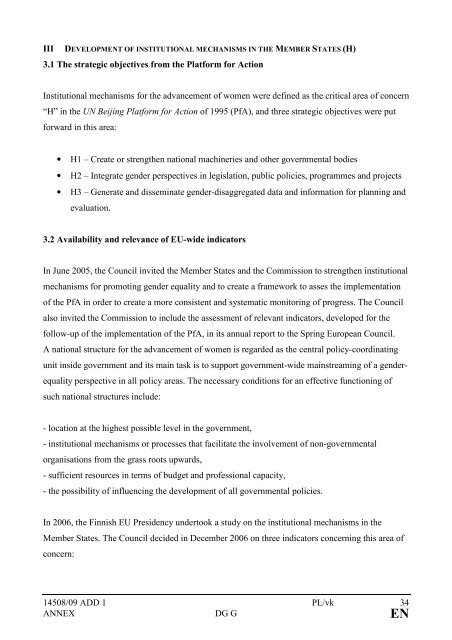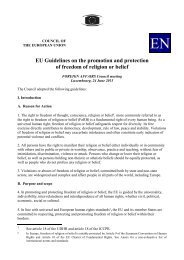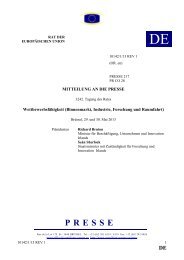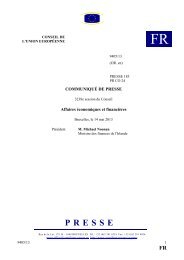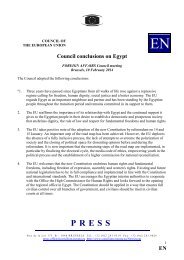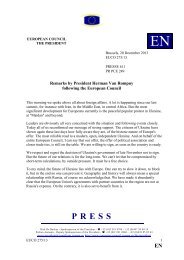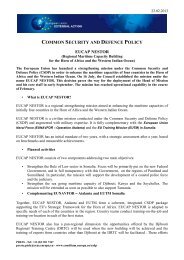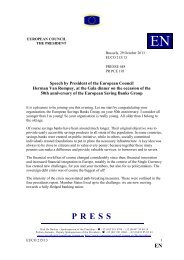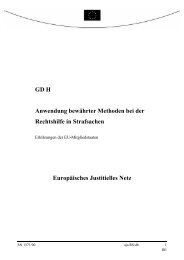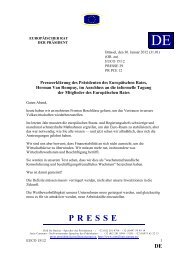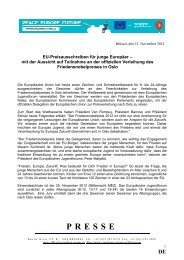14508/09 ADD 1 PL/vk 1 DG G COUNCIL OF THE ... - Europa
14508/09 ADD 1 PL/vk 1 DG G COUNCIL OF THE ... - Europa
14508/09 ADD 1 PL/vk 1 DG G COUNCIL OF THE ... - Europa
You also want an ePaper? Increase the reach of your titles
YUMPU automatically turns print PDFs into web optimized ePapers that Google loves.
III DEVELOPMENT <strong>OF</strong> INSTITUTIONAL MECHANISMS IN <strong>THE</strong> MEMBER STATES (H)<br />
3.1 The strategic objectives from the Platform for Action<br />
Institutional mechanisms for the advancement of women were defined as the critical area of concern<br />
“H” in the UN Beijing Platform for Action of 1995 (PfA), and three strategic objectives were put<br />
forward in this area:<br />
• H1 – Create or strengthen national machineries and other governmental bodies<br />
• H2 – Integrate gender perspectives in legislation, public policies, programmes and projects<br />
• H3 – Generate and disseminate gender-disaggregated data and information for planning and<br />
evaluation.<br />
3.2 Availability and relevance of EU-wide indicators<br />
In June 2005, the Council invited the Member States and the Commission to strengthen institutional<br />
mechanisms for promoting gender equality and to create a framework to asses the implementation<br />
of the PfA in order to create a more consistent and systematic monitoring of progress. The Council<br />
also invited the Commission to include the assessment of relevant indicators, developed for the<br />
follow-up of the implementation of the PfA, in its annual report to the Spring European Council.<br />
A national structure for the advancement of women is regarded as the central policy-coordinating<br />
unit inside government and its main task is to support government-wide mainstreaming of a gender-<br />
equality perspective in all policy areas. The necessary conditions for an effective functioning of<br />
such national structures include:<br />
- location at the highest possible level in the government,<br />
- institutional mechanisms or processes that facilitate the involvement of non-governmental<br />
organisations from the grass roots upwards,<br />
- sufficient resources in terms of budget and professional capacity,<br />
- the possibility of influencing the development of all governmental policies.<br />
In 2006, the Finnish EU Presidency undertook a study on the institutional mechanisms in the<br />
Member States. The Council decided in December 2006 on three indicators concerning this area of<br />
concern:<br />
<strong>14508</strong>/<strong>09</strong> <strong>ADD</strong> 1 <strong>PL</strong>/<strong>vk</strong> 34<br />
ANNEX <strong>DG</strong> G EN


